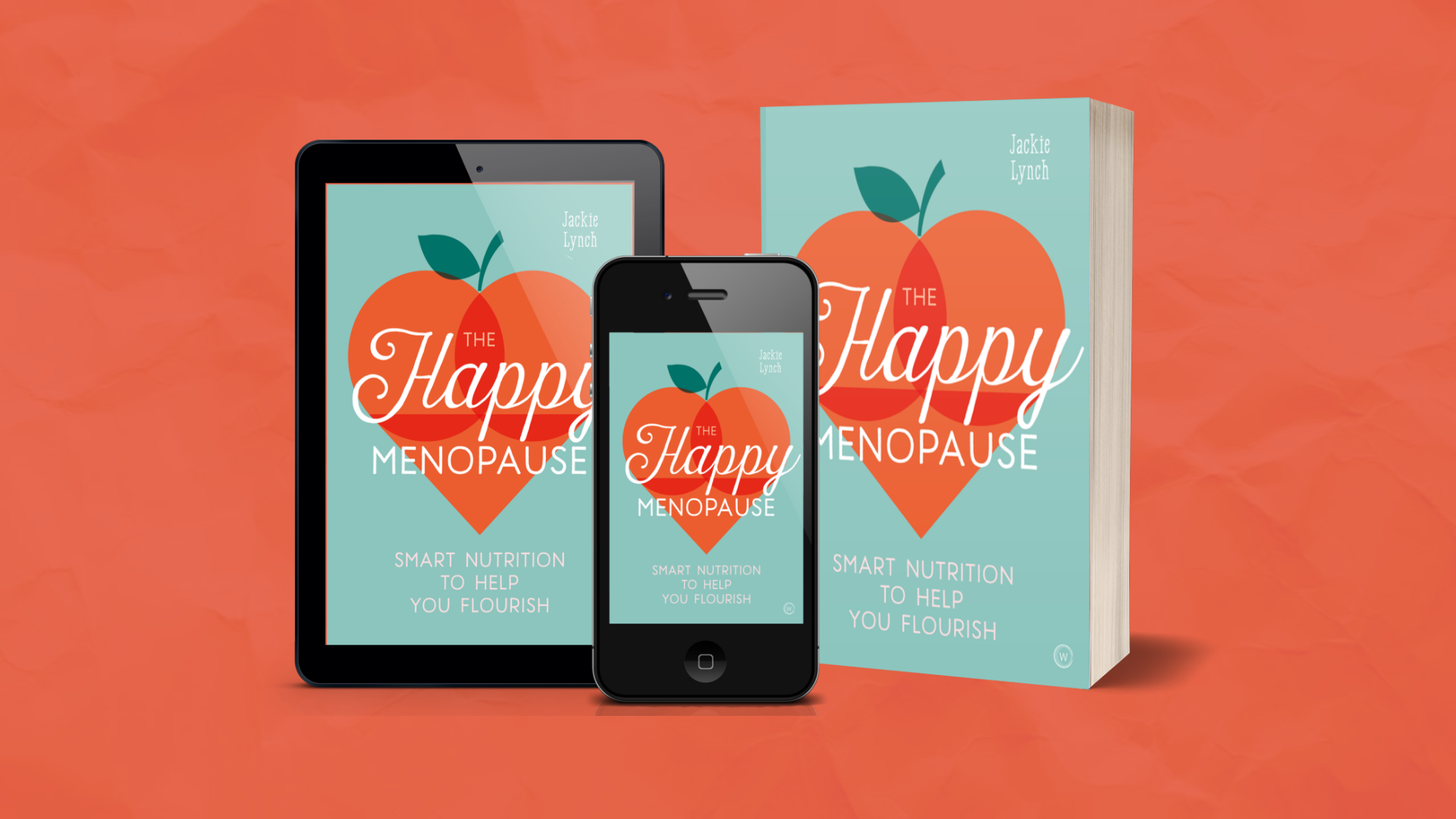Magnificent Macros

By Jackie Lynch
It’s that time of year when all manner of drastic diets and radical regimes are floating around, but before you get carried away and start eliminating major food groups, let’s take a quick look at why the macros – proteins, fats and carbohydrates – are so important for women in midlife.
Protein
Why Do I Need It?
The human body is made of protein and it’s vital for the growth and repair of all our body cells. We need it to build strong bones and to support muscle tone, which is crucial for women in midlife because the loss of oestrogen affects bone density and we can also lose up to 40% of muscle mass by the time we’ve gone through the menopause. Protein also plays a key role in mental health, because the body uses amino acids found in protein-rich foods to create neurotransmitters which support mood, memory and motivation, all of which can be affected during this time of hormonal transition. Protein helps to support strength and stamina and it’s also a key player in blood sugar balance, because it slows down the release of carbohydrate in the body, keeping you going for longer and helping to reduce the sugar cravings that lead to weight gain.
Which Foods Contain Protein?
Meat, fish, eggs and dairy are known as complete proteins, which means that they contain all the essential amino acids in one easy package. The body then uses these to create the remaining amino acids that we need. Plant sources of protein such as beans, chick peas, lentils, nuts and seeds contain some but not all the essential amino acids, so it’s important for anyone with a plant-based diet to eat a range of these different foods to achieve the correct balance. Soya and quinoa are examples of complete plant proteins. Make sure that you’re eating protein with every meal and snack, to be sure you’re getting all the protein you need.
Fat
Why Do I Need It?
Poor old fat often gets a pretty bad rap, but it’s important to understand that it’s an absolutely essential nutrient for our health. While excessive levels of saturated fat can be linked to increased risk of cardiovascular disease, the body also uses it to create sex hormones, so it’s very important to ensure that it features in your diet. Following a very low fat diet in midlife is not a smart move, because of the key role fats play in brain, heart and hormone health. It’s also a very rich source of energy. Monounsaturated fats can help to support the correct balance of LDL and HDL cholesterol in the body and polyunsaturated fats have multiple roles in supporting cardiovascular health, reducing inflammation and joint pain, balancing hormones and supporting cognitive health. Anyone struggling with brain fog, erratic moods or PMS may benefit from ensuring that their diet contains sufficient mono- and polyunsaturates.
Which Foods Contain Fat?
The good news is that foods that are rich in protein will also be a good source of fat and foods that naturally contain fat will contain all three forms: saturated, monounsaturated and polyunsaturated fats. It’s the ratio that will vary. Red meat, cheese, butter and coconut oil are examples of foods that are high in saturated fat. Current guidelines advise that women do not exceed 20g daily. Olive oil, avocado, almonds and cashews are rich in monounsaturates. Polyunsaturates fall into two categories: omega 3 and omega 6 fatty acids. Eating oily fish like salmon, sardines or mackerel 2-3 times per week will help to support omega 3 levels; flaxseed and walnuts are also excellent sources. The main sources of omega 6 are sunflower or palm oil, which are often found in processed foods and this can disrupt the desired ratio of the two: the balance of omega 6 to omega 3 should be anything between 1:1 and 5:1, but is often between 25:1 and 50:1 in a diet that relies on processed foods. A build-up of omega 6 may generate an inflammatory response and disrupt the action of omega 3, increasing symptoms of joint pain and other inflammatory conditions.
Carbohydrate
Why Do I Need It?
Carbohydrate is the principle source of energy for most of us, because the body can convert it quickly and easily to provide a short burst of energy to support our physical and mental needs. It’s a very broad food group and not all carbs are equal, because they range from refined sugars and starchy foods to complex carbohydrates which are rich in fibre.
Too many sugary foods and refined carbohydrates may lead to weight gain, because the body will break them down quickly and if we don’t need all that extra energy, it will store any excess as fat cells. This is why it’s important to keep an eye on levels of refined sugar, because it’s a very common culprit in midlife weight-gain. Fibre helps to slow down the release of sugar into the blood, keeping you going for longer and helping to limit the cravings for sugary food and refined carbohydrate.
Fibre also plays a key role in supporting optimal digestion and encouraging regular bowel movements so that a lack of fibre in the diet can result in constipation, which is a common issue during the menopause. It’s also crucial for hormone balance during menopause, because of the role that it plays in supporting the detoxification pathways in the liver that regulate our hormone levels. Fibre also binds to and eliminates old hormones in the gut, so it’s an all-round top nutrient for women in midlife.
Which Foods Contain Carbohydrate?
White bread, white rice and white pasta are everyday examples of refined carbohydrates, where the fibrous wholegrain has been removed. A simple carbohydrate is made up of 1 or 2 units of sugar and the body digests them very rapidly – fruit, honey or jam, as well as the table sugar used in confectionery and baked products are typical sources. These are best enjoyed in moderation, in order to support blood sugar balance and weight management.
Wholegrains such as wholemeal bread, brown rice or oats are all rich in fibre. Vegetables and pulses like lentils, chickpeas and beans are excellent sources of fibre. Fruits with an edible skin like apples, berries or plums tend to be higher in fibre than fleshy tropical fruits. We should be aiming to have at least 30g of fibre in our diet every day – a medium slice of wholemeal bread contains about 2.7g, a standard 80g portion of broccoli contains about 2.2g and a 30g portion of porridge oats contains about 2.5g.
Portion Management
A combination of these three macronutrients is essential to maintain optimal health. At lunch and dinner, ¼ of the meal should be made up of proteins & fats, such as a salmon steak, chicken breast or big dollop of houmous. Another ¼ should consist of complex starchy carbohydrate, such as brown rice or wholegrain pasta and ½ the meal should be vegetables, ideally split between green vegetables and other vegetables. If you’re avoiding starch, then the vegetable portion can be expanded to 75% of the meal. By managing your portions in this way, you’ll make the most of your macros and get all the benefits of a balanced protein, fat and fibre-rich meal which will lay the foundations for great health through midlife and beyond.

Jackie Lynch is a Registered Nutritional Therapist and host of the popular diet & lifestyle podcast, The Happy Menopause. Her new book The Happy Menopause: Smart Nutrition to Help You Flourish is out now. Follow her on social media at @WellWellWellUK.


